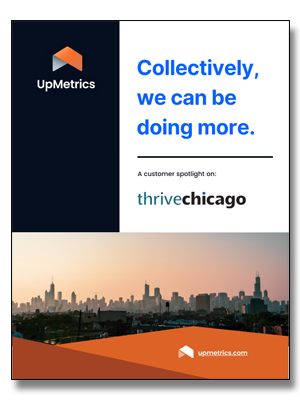Here are the 4 Steps Nonprofits Need to Get Started Analyzing Impact
In our increasingly data-driven world, access to data is no longer a “nice to have.” It is essential for any organization across every sector. As such, data is transforming how the philanthropic sector understands and drives impact. But analyzing impact doesn’t have to be complex. Here are four steps to take to leverage data to start analyzing impact.
Step 1: Define the goals, and the indicators that you will use to measure progress toward those goals
What is the impact that your organization is trying to have? Have you defined specific goals that will serve as markers of progress toward that impact? What indicators will be your guideposts along the way?
Every impact organization has a guiding purpose. The key to becoming data driven is to clearly define your goals, and track progress toward those goals, which will add up to the wider impact you’re working for in the world.
Step 2: Collect the data on your program and compile it
Tracking progress by means of indicators, or metrics, is the key to moving the needle for your organization. Indicators allow you to see what is working (and what is not working), and make adjustments accordingly. Without this information, it’s impossible to make data-driven decisions, which can leave you wandering in the dark.
It’s vital to painstakingly define your indicators, so that you don’t get lost in data overload. Collecting specific metrics makes the process manageable and keeps you focused on what matters most.
Step 3: Analyze the data
Collecting data is a great step, but it’s not an end in itself. There’s no use in collecting data if you have no way to use it. The next step is to review baseline numbers and analyze your organization’s progress towards your goals.
One thing that can be very tough for people working hard in any arena is being honest with themselves if the numbers don’t look rosy. But whether the numbers paint a beautiful picture or not, that information is vital to your success (or failure, if you ignore it).
In fact, negative outcomes can be even more informative that positive ones—getting a strong sense of what’s not working can help you make it better. So, don’t ignore results that run counter to what you’d like to see.
Which brings us to...
Step 4: Learn from your data to drive decision-making and resource allocation, and leverage outcome data to tell a compelling story of impact
Once you’ve collected and analyzed your data, it’s time to learn from it. Leverage data to inform internal decisions to drive impact and track progress towards goals over time. Are there areas where you can improve? How can you adjust your resources to match the needs across your organization? Does your data show that you’re making progress toward your goals? Is that progress linear, or have you encountered peaks and valleys along the way?
All of the above helps you not only become more efficient and effective, but also drives storytelling—and ultimately, attract mission-aligned capital to help hit your goals and scale impact.
Telling a compelling story is one thing. Telling a data-driven story, leveraging not just the qualitative side, but also the quantitative data, makes your impact clearer and your pitch more profound.
"The qualitative side, anecdotes and personal stories, paint a black-and-white picture of our work. Quantitative data, then, adds color to those stories, and makes them more compelling and complete."
—George Hernandez, UpMetrics Managing Director
Learn more about how UpMetrics tools and services are helping organizations define, collect, and leverage their data to tell their stories, and drive greater impact.

August 8, 2019
